What is Enterprise Pricing?
Enterprise pricing is a pricing model or strategy used primarily for products or services promoted to large organizations, institutions, or businesses rather than individual consumers.
Unlike regular pricing models, enterprise pricing may include custom features, bulk discounts, and longer-term contractual obligations to meet the expectations of larger organizations.
Enterprise pricing ensures that businesses aren’t bound by the confines of one-size-fits-all solutions but are empowered to make choices based on their unique needs.
Enterprise Pricing for Software Solutions
A general pricing strategy is insufficient for large organizations in today’s fast-paced digital environment, where software solutions are in high demand. This is due to the fact that large organizations frequently have specialized or complex requirements.
In such cases, enterprise pricing ensures that businesses can provide the solutions required by these large organizations without the fear of profit loss, and organizations get the solutions they need without sacrificing growth or usefulness.
For example, Salesforce’s “Enterprise” pricing tier focuses on features catering to larger enterprises with extensive demands while still maintaining plans suitable for smaller businesses.
Unsurprisingly, the worldwide IT spending on enterprise software was about 783 billion U.S. dollars in 2022, a 7.1% increase from the previous year.
Leaders in the B2B SaaS market are distinguished from followers by their great incorporation of different pricing options for different business sizes, including the enterprise subscription pricing strategy.

Key Components of Enterprise Pricing
Enterprise pricing encompasses not only the software itself but also the entire ecosystem that guarantees maximum value to large-scale organizations. The following are some key components of enterprise pricing:
Feature Customization
Unlike conventional pricing packages, enterprise pricing often lets businesses choose the features they need. The company only pays for features it uses and gets what it needs.
For example, a large financial organization may need advanced data analytics but not marketing automation. Consequently, the SaaS supplier would exclude marketing automation and improve analytics.
Volume Discounts
As their purchases increase, companies anticipate and obtain volume discounts. The more licenses or subscriptions a corporation buys, the lower its per-unit cost.
For example, Dropbox rates are discounted by 20% for businesses willing to make an annual commitment.
Premium Support
Support for enterprise customers is usually prioritized. This may include faster response times, dedicated account managers, 24/7 support, or on-site assistance.
For example, CloudApp offers premium support tiers where enterprises can get technical account managers and 24/7 Priority support.
Scalability Features
Enterprise solutions are expected to handle large data and user activity. As a result, the software must be designed to grow without generating speed issues. The costs of such extensive scaling features would be included in the pricing.
Training and Onboarding
A large company’s software implementation can be complex. As a result, most companies’ enterprise pricing includes training and onboarding to ensure a smooth transition.
For example, onboarding services from HubSpot help organizations set up their software, migrate data, and train staff to use the platform.
Factors Influencing Enterprise Pricing
Size and Scale of the Business
Larger businesses usually require more licenses, data storage, bandwidth, and resources. Higher volume may result in lower per-unit rates due to economies of scale, but the overall contract value will be substantial when totaled.
For example, Slack’s “Enterprise Grid” is designed for large-scale organizations with thousands of employees. While individual licenses are offered at a competitive price, the sheer volume of the contract would be substantial.
Level of Customization and Integration Required
It takes resources to customize software for company purposes or integrate it seamlessly with current systems. This extra work and complexity often affect price.
For example, HubSpot is a great CRM with native tools, but organizations generally have existing systems. Businesses must pay for technical integration and data transfer to link HubSpot with Salesforce or SAP.
Market Competition
Strong competition or a saturated market might lower prices. As a result, companies need to be competitive and offer new features or services.
For example, despite its many capabilities, Zoom competes with Microsoft Teams, Google Meet, and Cisco WebEx. The platform offers reasonable pricing and adds features and integrations to remain relevant.
Examples of Enterprise Pricing Strategies
Software and Technology
- Freshworks: This leading CRM provider has multiple pricing tiers, with the “Enterprise” tier being more expensive than the basic ones, reflecting its advanced features geared toward larger businesses.
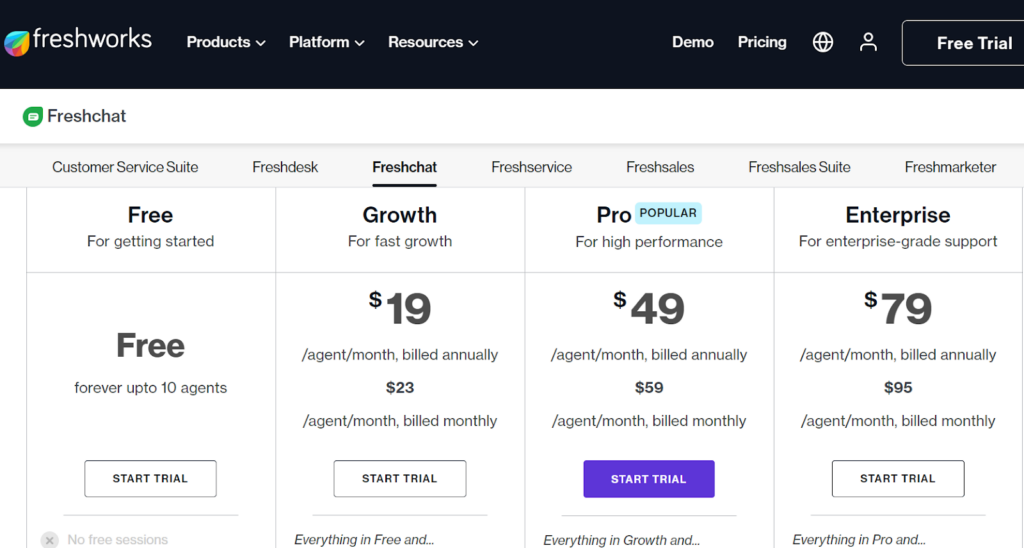
- Monday.com: While they offer individual and team packages, their “Enterprise” package is custom-priced based on specific business needs and includes advanced features and support.
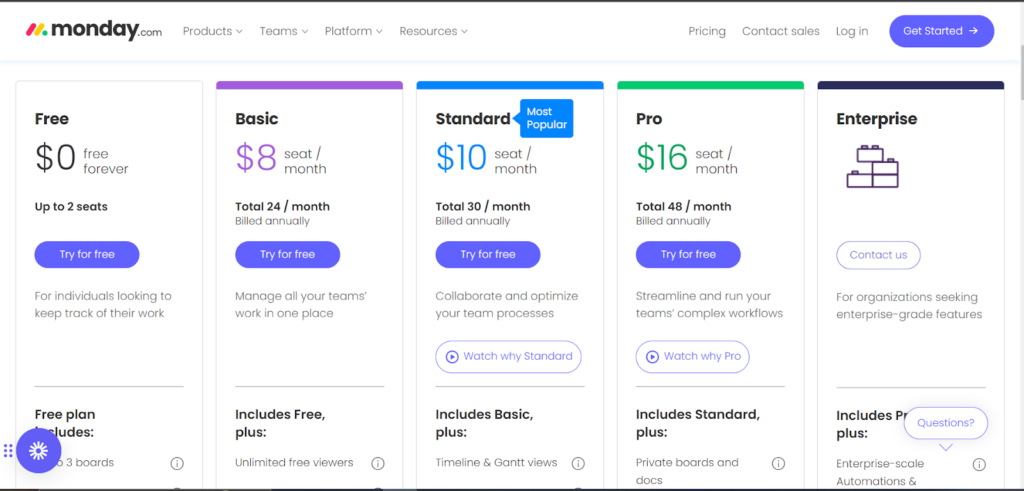
Cloud Computing
- Amazon Web Services (AWS): AWS offers an Enterprise Support plan. Instead of paying fixed monthly rates, enterprise clients pay a percentage of their monthly AWS usage in exchange for premium support, infrastructure event management, and other services.
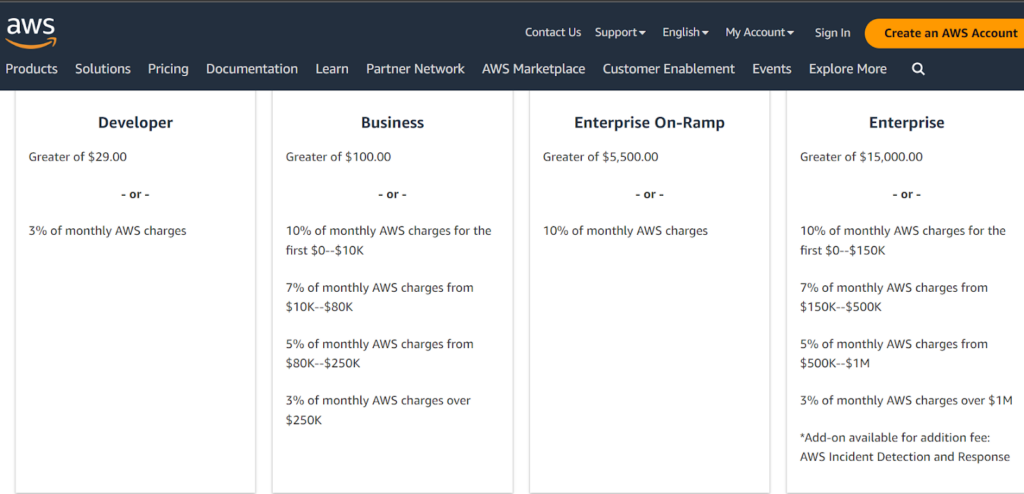
- Microsoft Azure’s Enterprise Agreement provides enterprises with term flexibility and volume-based discounts, moving beyond the pay-as-you-go model.
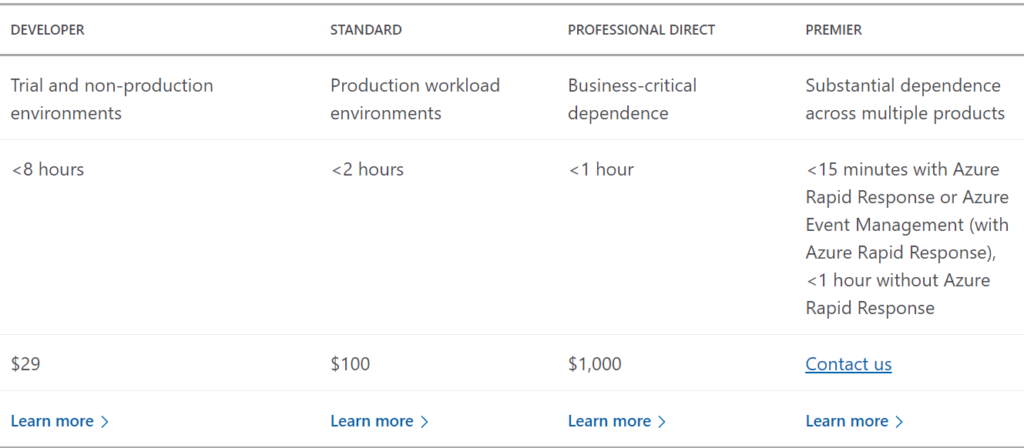
MORE: Microsoft 365 vs. Google Workspace
Communication Platforms
- In addition to its standard pricing tiers, Wrike offers an “Enterprise Grid” solution for large businesses or those in regulated industries. Pricing is usually negotiated based on the requirements.
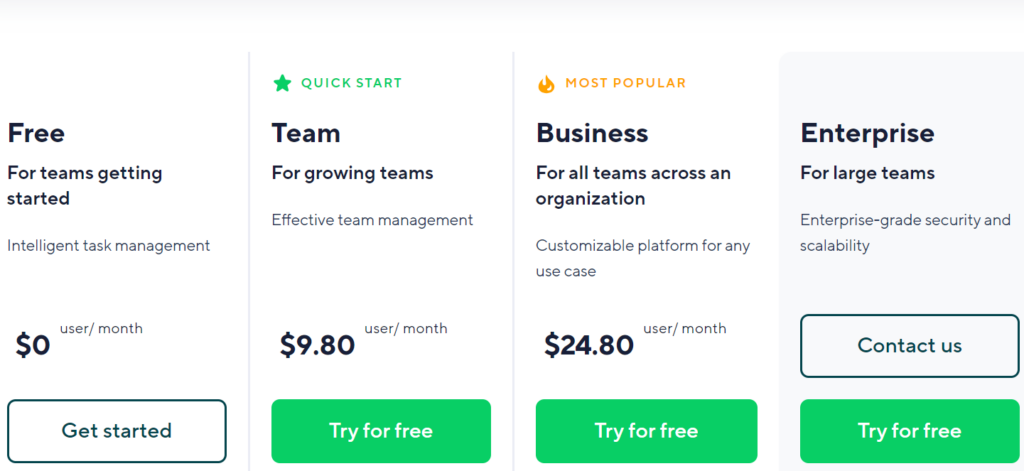
E-commerce Platforms:
- Shopify Plus (enterprise plan) does not have a fixed monthly fee like their standard plans. Pricing is instead determined by a variety of factors, including sales volume.
Advantages and Disadvantages Enterprise Pricing
| Advantages of Enterprise Pricing | Disadvantages of Enterprise Pricing |
|---|---|
| Tailored solutions for large businesses: Companies can provide special features that distinguish them from competitors. | Potential for complexity and confusion: Businesses may face longer sales cycles and lose potential customers to simpler, more straightforward solutions. |
| Potential for better price negotiations: You can alter charges based on your client’s needs and budgets, increasing your chances of closing sales. | The risk of alienating smaller customers: Customers may believe the emphasis is solely on the “big players,” leading them to explore other software alternatives. |
| Enhanced scalability and flexibility: As the organization grows, so will your software solution, enhancing client loyalty and retention. | Need for clear communication and transparency: Any perception of hidden costs or a lack of clarity can harm your brand’s reputation and trustworthiness. |
| Fostering long-term relationships with major clients: Businesses can cultivate long-lasting relationships with high-value customers by offering customized solutions. |
Is Enterprise Pricing Right for My Business?
If your company serves a large and diverse clientele, especially those who require customized solutions and integrations, enterprise pricing might provide the necessary flexibility and customization.
In addition, when your company grows, the extra support and unique features commonly associated with enterprise pricing will help you manage expansion and ensure client satisfaction.
On the other hand, a standard price plan may be more appropriate if your offerings are uncomplicated and do not require significant levels of customization or if your target audience consists mostly of smaller enterprises or individual consumers.
The best choice is determined by the junction of your product’s capabilities, your customer’s expectations, and your firm’s growth trajectory.
Best Practices for Implementing Enterprise Pricing
1. Understand your customers’ needs
Every business has its own set of challenges and requirements. You can tailor your pricing strategy to offer real value by delving deeply into client needs and industry trends.
2. Keep pricing structures flexible but clear
While customization is essential, clarity is also crucial. Enterprises value transparent pricing because it allows them to understand the value they receive.
3. Keep lines of communication open with key clients
Maintaining a two-way communication channel enables you to receive feedback, address concerns, and make necessary changes.
4. Review and adjust based on feedback and market changes
The market landscape and enterprise requirements are constantly changing. Regularly reviewing your pricing strategy can assist you in remaining competitive and relevant.
Key Takeaways
Understanding pricing strategies such as enterprise pricing is critical in the fast-paced world of SaaS.
Enterprise pricing, with its emphasis on bespoke solutions and high adaptability, provides SaaS companies with a distinct advantage in meeting the intricate demands of large businesses.
Software providers can foster deeper relationships, ensure higher customer satisfaction, and drive significant revenue by tailoring offerings to the specific needs of these organizations.
As the digital landscape evolves, enterprise pricing emerges as a strategic tool for businesses seeking to carve a niche and provide unrivaled value in an increasingly competitive market.
Check our SaaS pricing reviews and details about SaaS tools on our SaaSGenius pricing website.
Related Posts
Frequently Asked Questions (FAQ)
Author
Methodology
- Who?
We are SaaS experts: Our specialists constantly seek the most relevant information to help support your SaaS business. - Why?
We are passionate about users accessing fair SaaS pricing: We offer up-to-date pricing data, reviews, new tools, blogs and research to help you make informed SaaS pricing decisions. - How?
With accurate information: Our website manager tests each software to add a Genius Score using our rating methodology to each product. Our editorial team fact-check every piece of content we publish, and we use first-hand testing, value metrics and leading market data.










